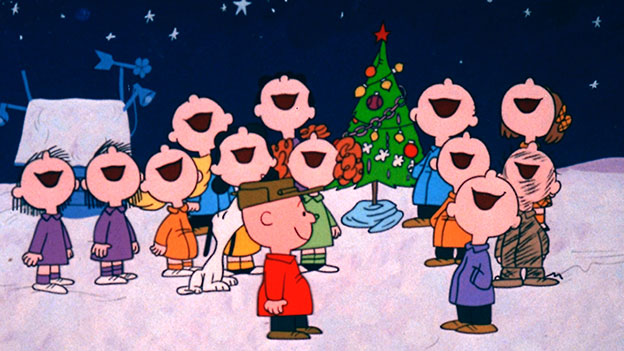
PHOTO: timeanddate.com
Nothing says Christmas more than snow on the ground outside, a fire burning in the fireplace, a beautifully decorated Christmas tree, lights strung up on the house outside, and carolers knocking on our door at random hours of the day, regaling us with their badly-sung renditions of popular Christmas music.
How did all of these traditions get started, though? Well, we’re here to explain the history of some of our most beloved Christmas traditions, including the tree, why we kiss under mistletoe, and yes, even why those pesky carolers are at your door…again.
1. The Christmas Tree

PHOTO: target.com
While it might be surprising, the history of the Christmas tree is rather long and complicated. Originally, it goes back to three cultures: the Romans, the Celts, and the Vikings. It began with winter solstice: the shortest day and longest night of the year. The Romans celebrated Winter Solstice with the festival of Saturn, their god of agriculture. Solstice meant it would soon be time to plant their fields. Because evergreen trees were green year-round, they held special agricultural significance, and on the night of “Saturnalia”, the Romans would decorate their homes with evergreen boughs.
In Northern Europe, the druids would decorate their temples with evergreen boughs to celebrate eternal life. In Scandinavia, the Vikings linked their evergreen trees to their sun god, Balder.
Evergreen trees did not become associated with the Christian holiday of Christmas, however, until the 16th century, in Germany. Devout Christians began to decorate trees and bring them into their homes. If wood was scarce, they would, instead, make “Christmas pyramids” out of smaller pieces of wood and decorate them with candles and evergreen boughs.
The story goes, though, that Martin Luther, the 16th-century leader of the Christian Reformation was responsible for first lighting a Christmas tree. According to the folktale, he was walking home one chilly winter night when he was awed by the brilliance of the night sky. Immediately he ran home and brought a tree in the main room and wired lit candles to its branches, trying to replicate the beauty for his family.
Two centuries later, the Christmas tree was a popular tradition that German immigrants brought to 19th-century America, but it didn’t really catch on. By the 1840s, the myth that Christmas trees were pagan symbols had begun to circulate around America.
That all changed in 1846, when Queen Victoria and her German husband, Prince Albert, were illustrated in the London News with a Christmas tree. The Royal family was all the rage during the Victorian era, and everybody wanted to be doing what they were. From then on, Christmas trees have been an essential part of the Christmas celebration.
2. Mistletoe

PHOTO: mirror.co.uk
The tradition of kissing under mistletoe has a much simpler explanation. It goes back to ancient Norse mythology and the Norse goddess, Frigga. The legend goes that Frigga’s son, Balder, was killed by an evil spirit with an arrow crafted from a mistletoe plant. In her grief, Frigga cried tears made from white berries. Her tears magically brought Balder back to life. From then on, Frigga was so happy to have her favorite son back that she blessed the mistletoe plant and promised that anyone who passed beneath it would receive a kiss.
Since then, the tradition has continued: anyone caught underneath mistletoe is fair game for kissing.
3. Caroling

PHOTO: stmarklacey.org
The history of caroling isn’t set in stone, but more likely than not, it goes back to the old tradition of “wassailing” in feudal European society. Wassail was a thick, hot spiced drink that was traditionally drank during the winter to keep travelers warm. During the 16th century, during Christmastime, Anglo-Saxon peasants would go “wassailing”, or, show up uninvited at their lord’s castle, pounding on the door, and requesting food or wassail in exchange for singing good winter tidings.
Eventually, this became associated with Christmas, since it always happened during the winter, and the “wassailers” began to sing Christmas carols instead of merely wishing the recipients well.

